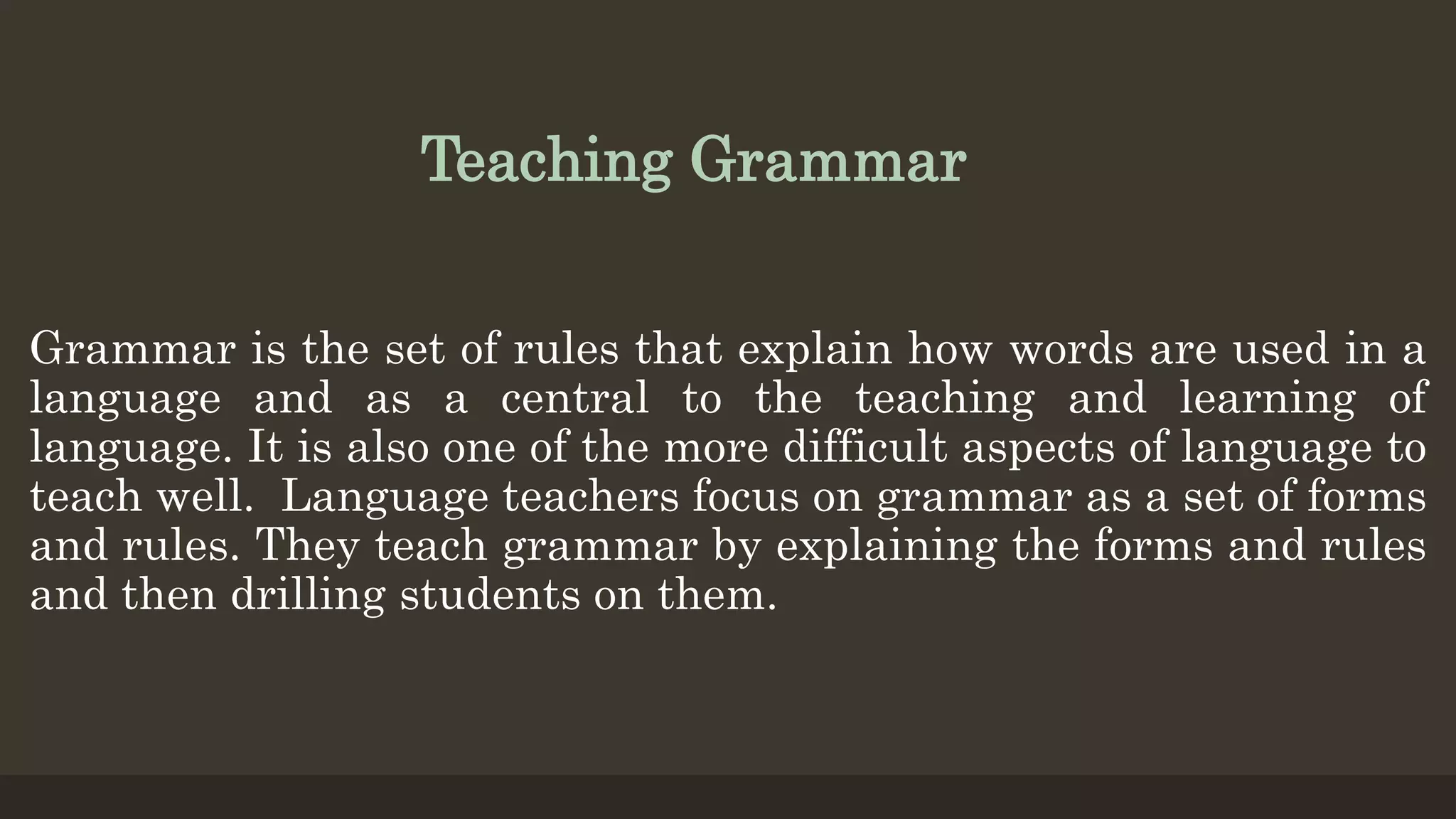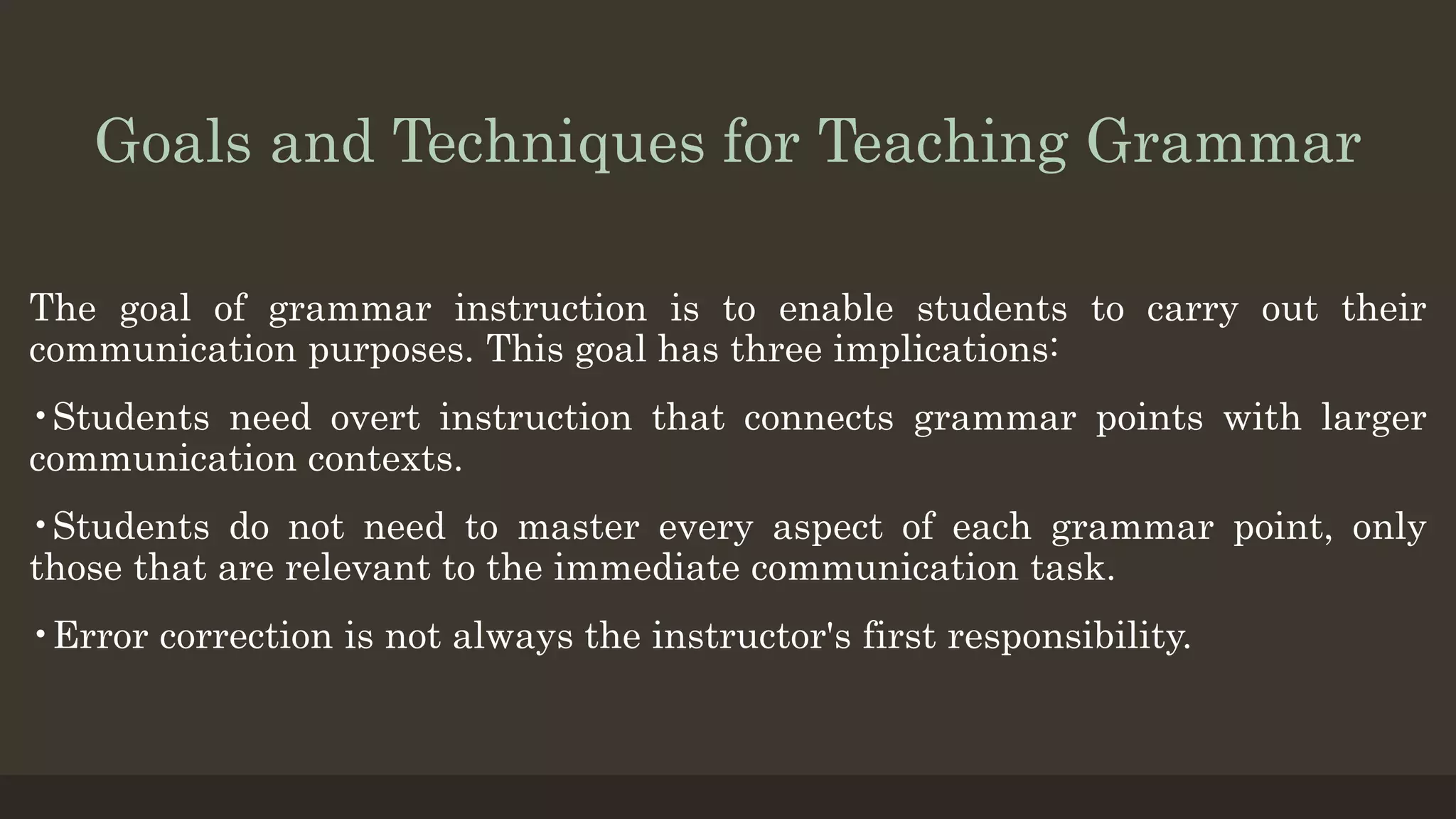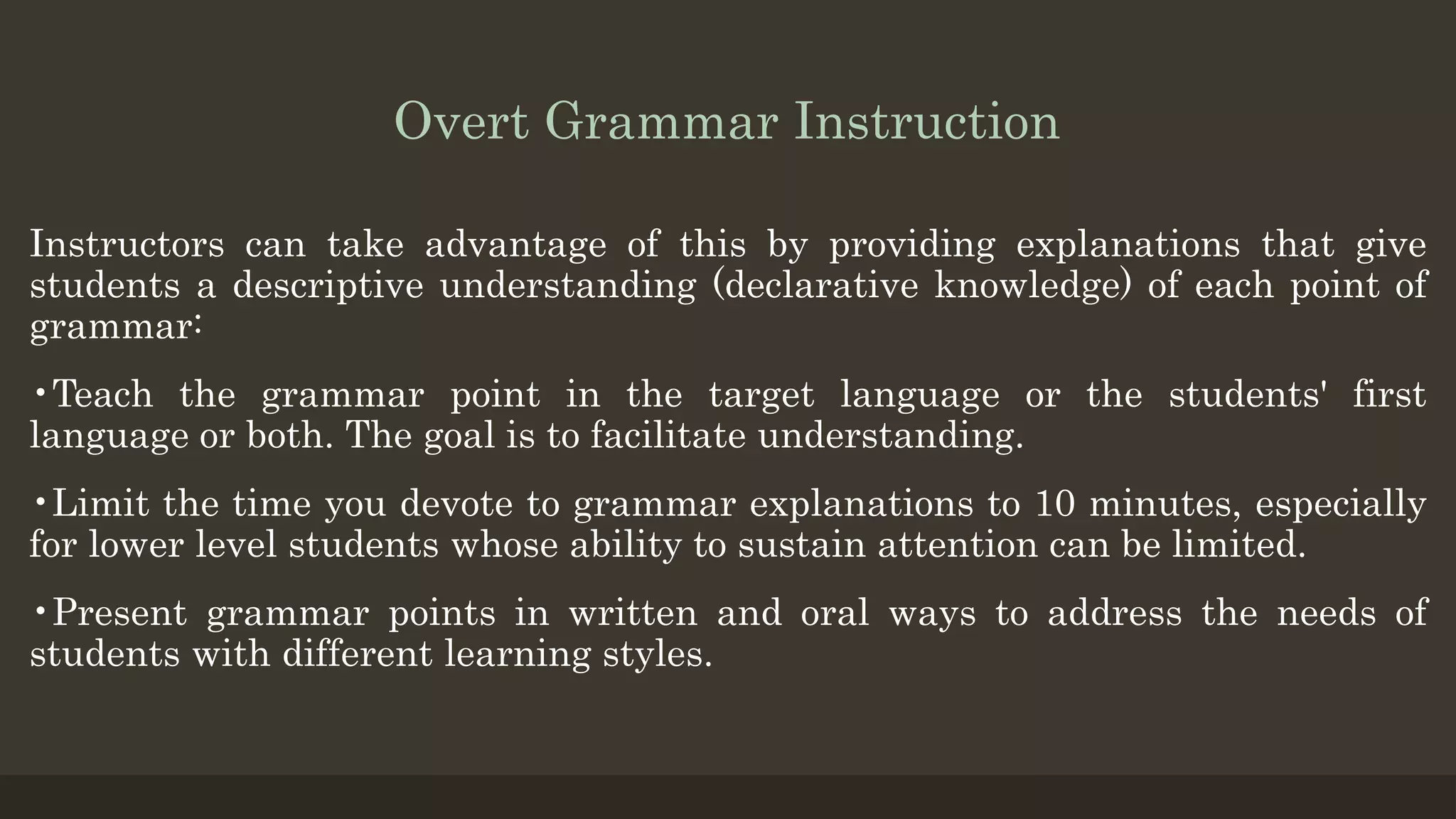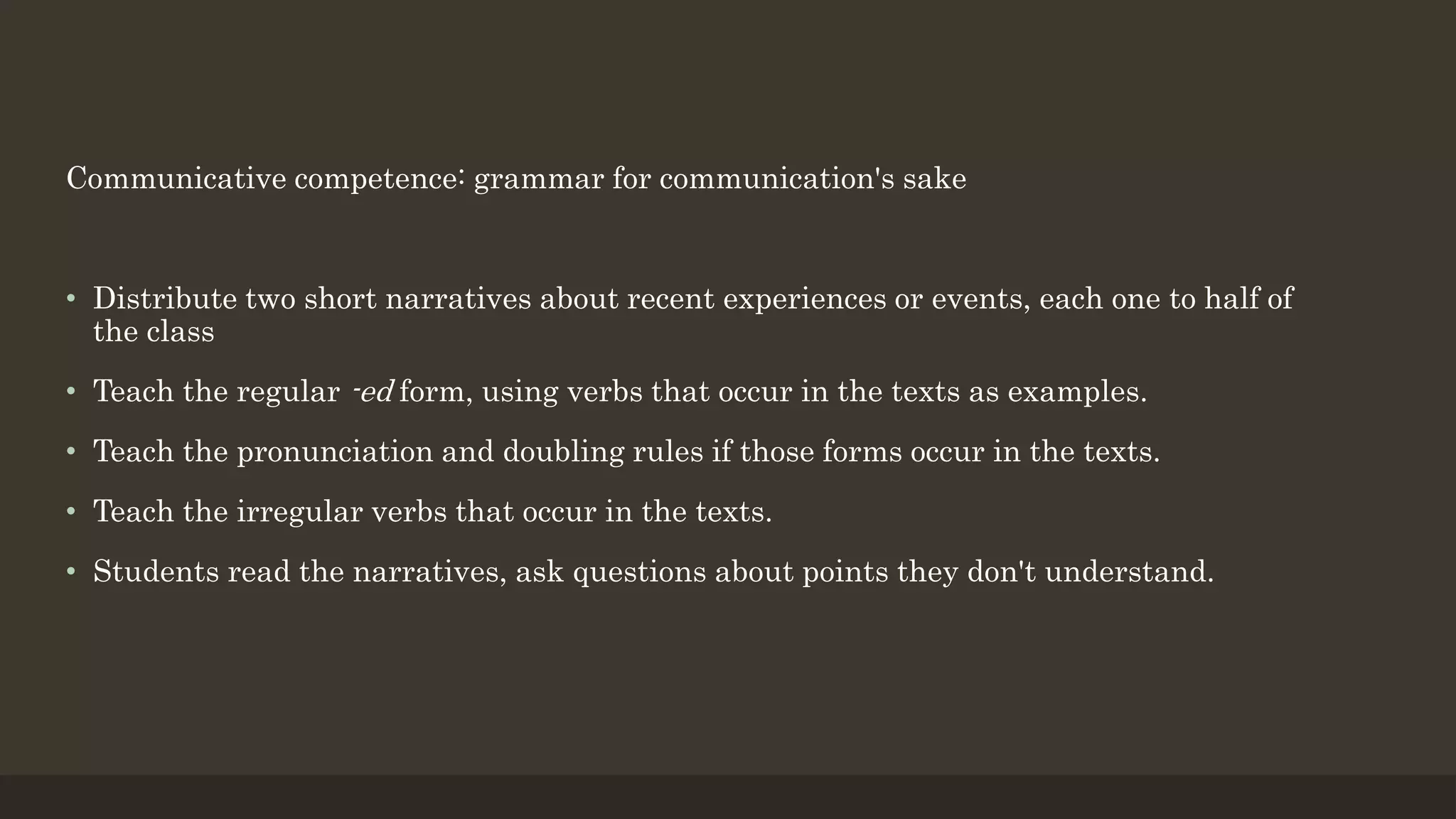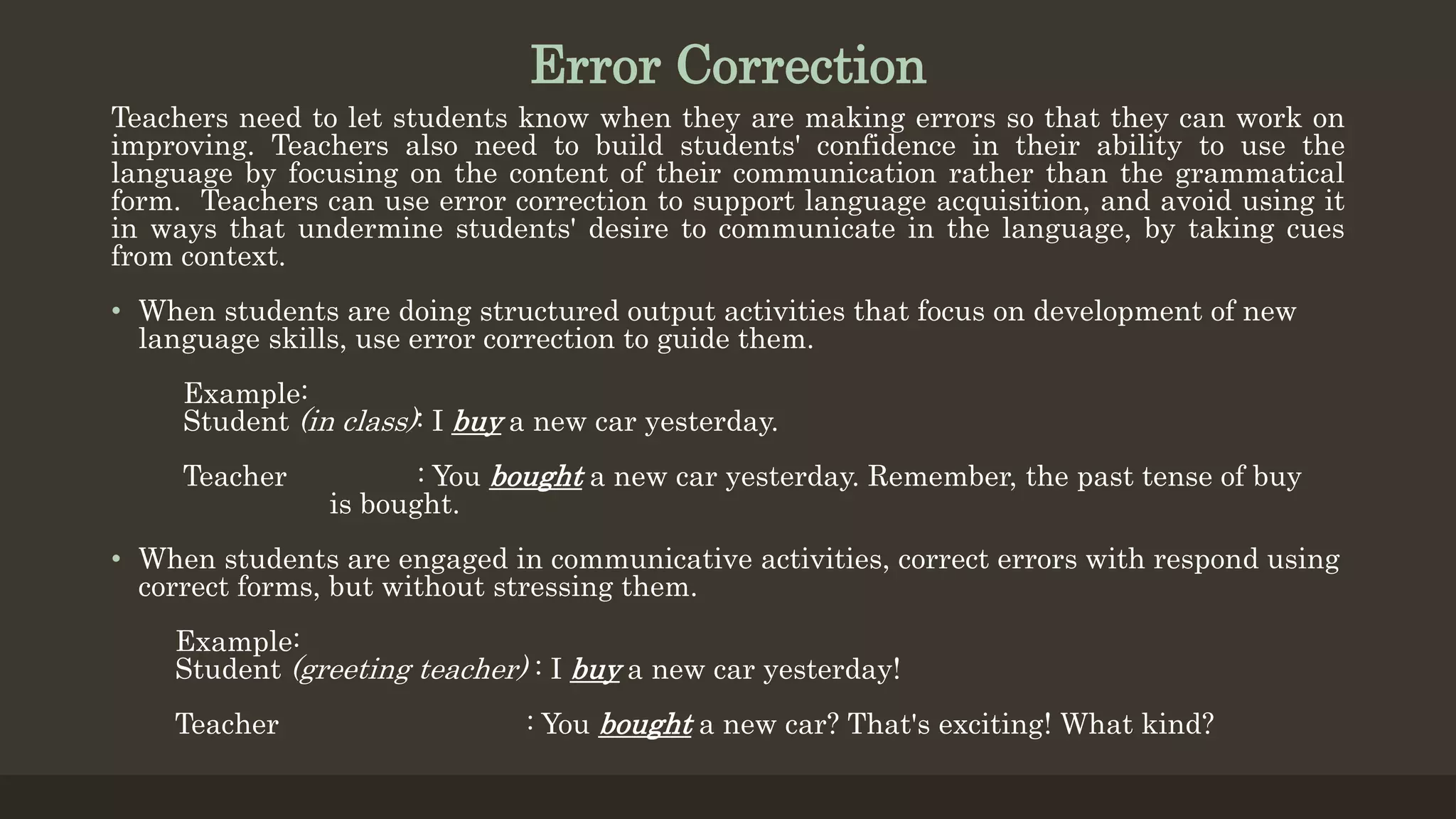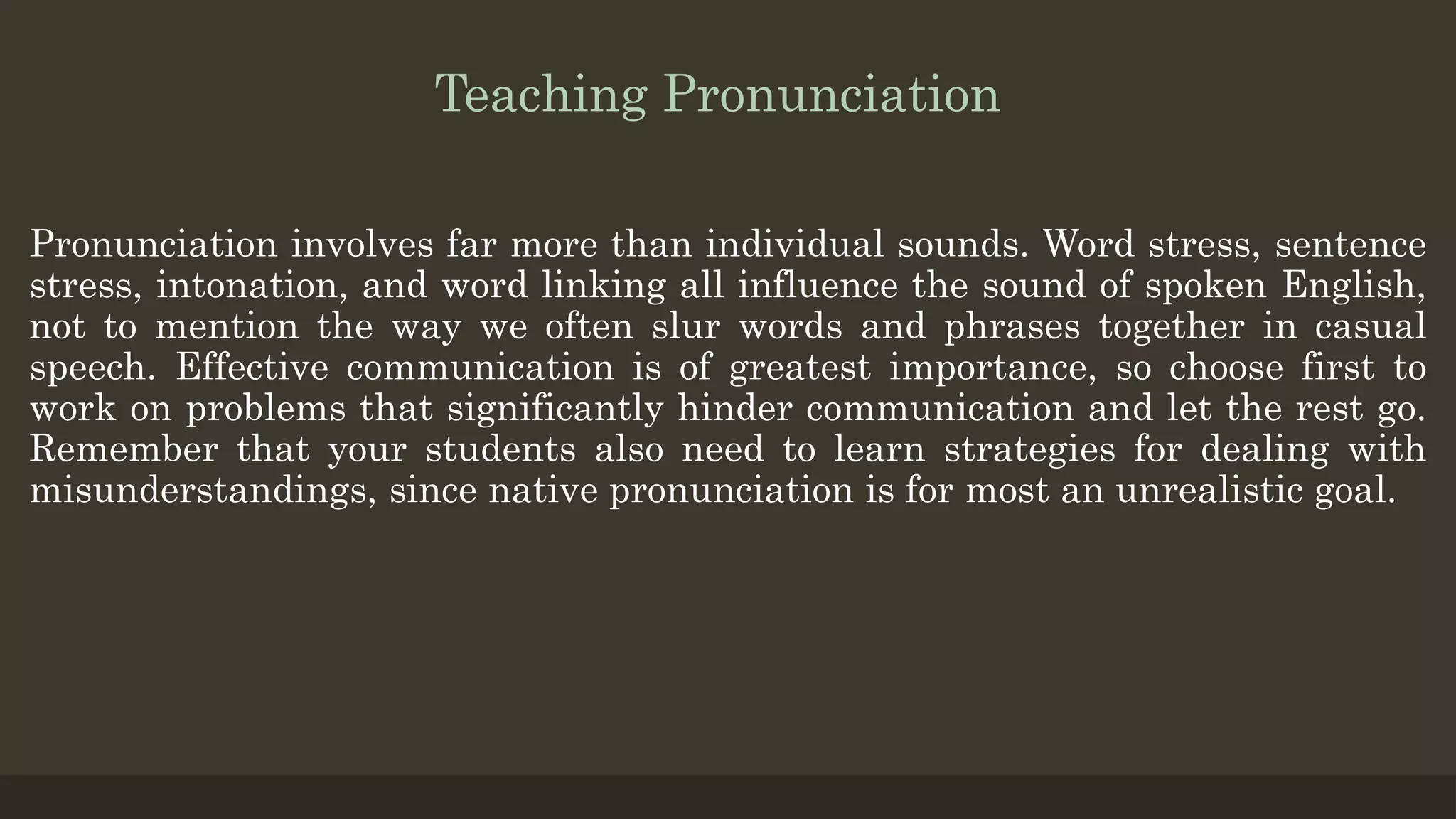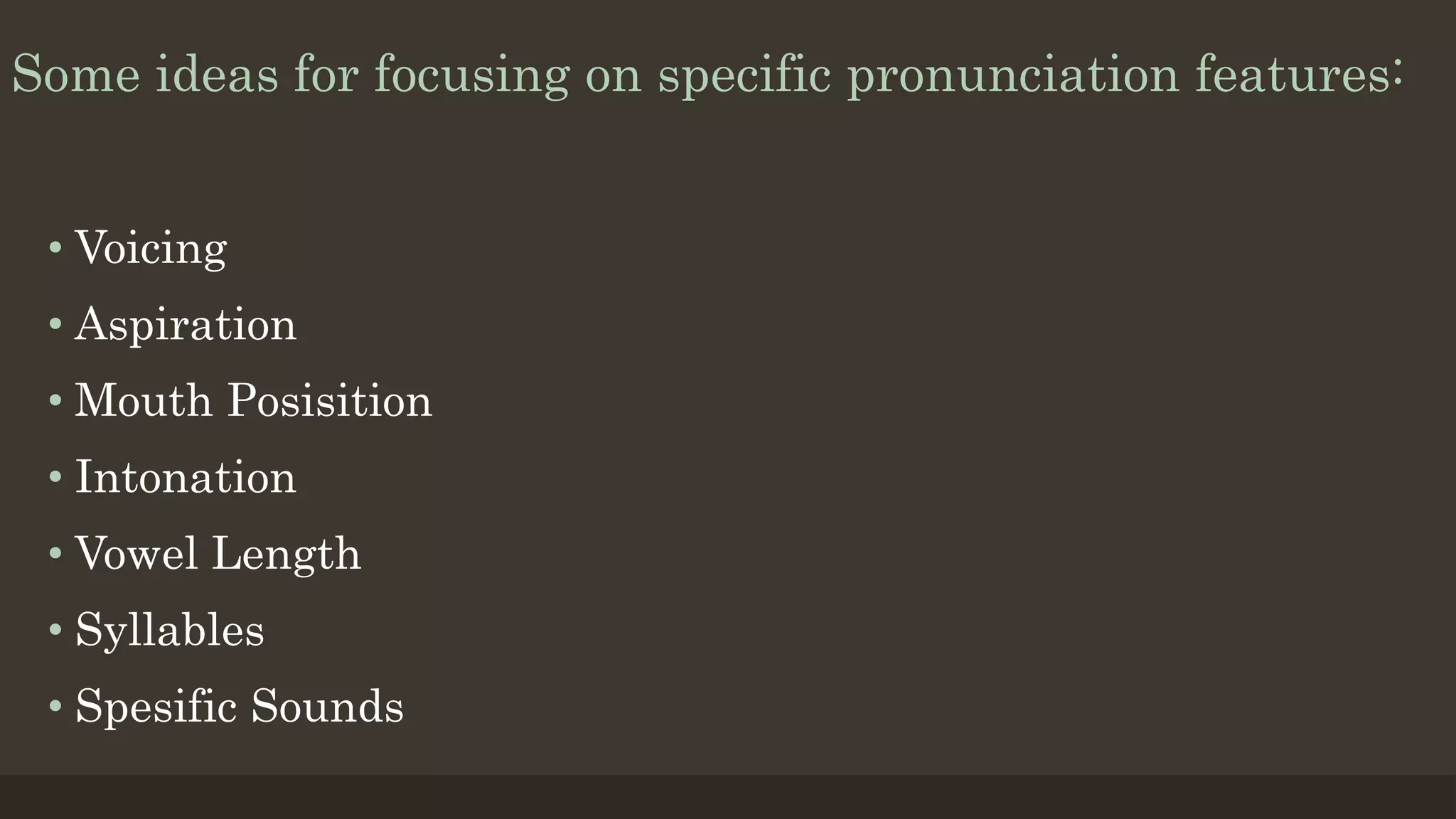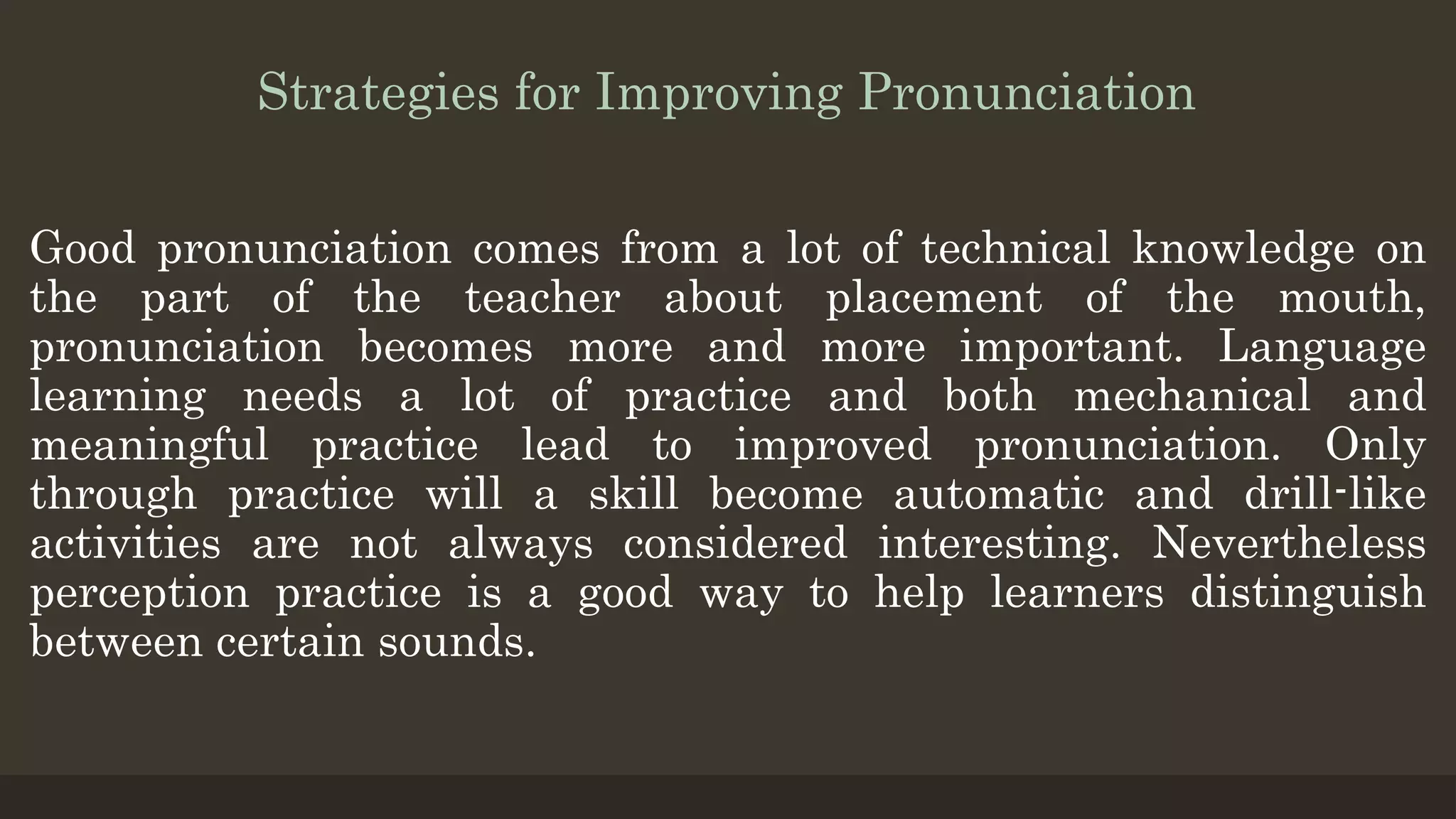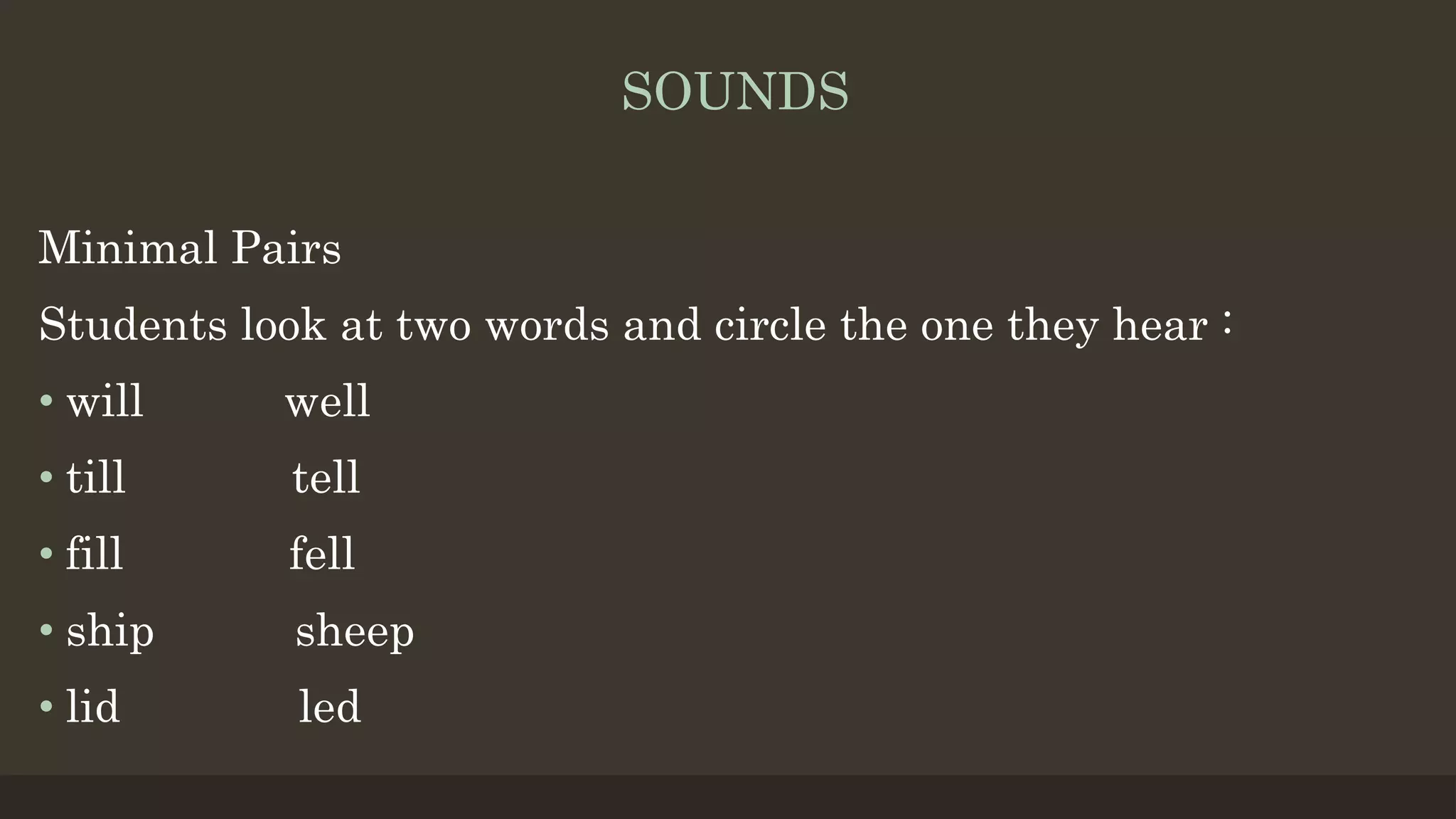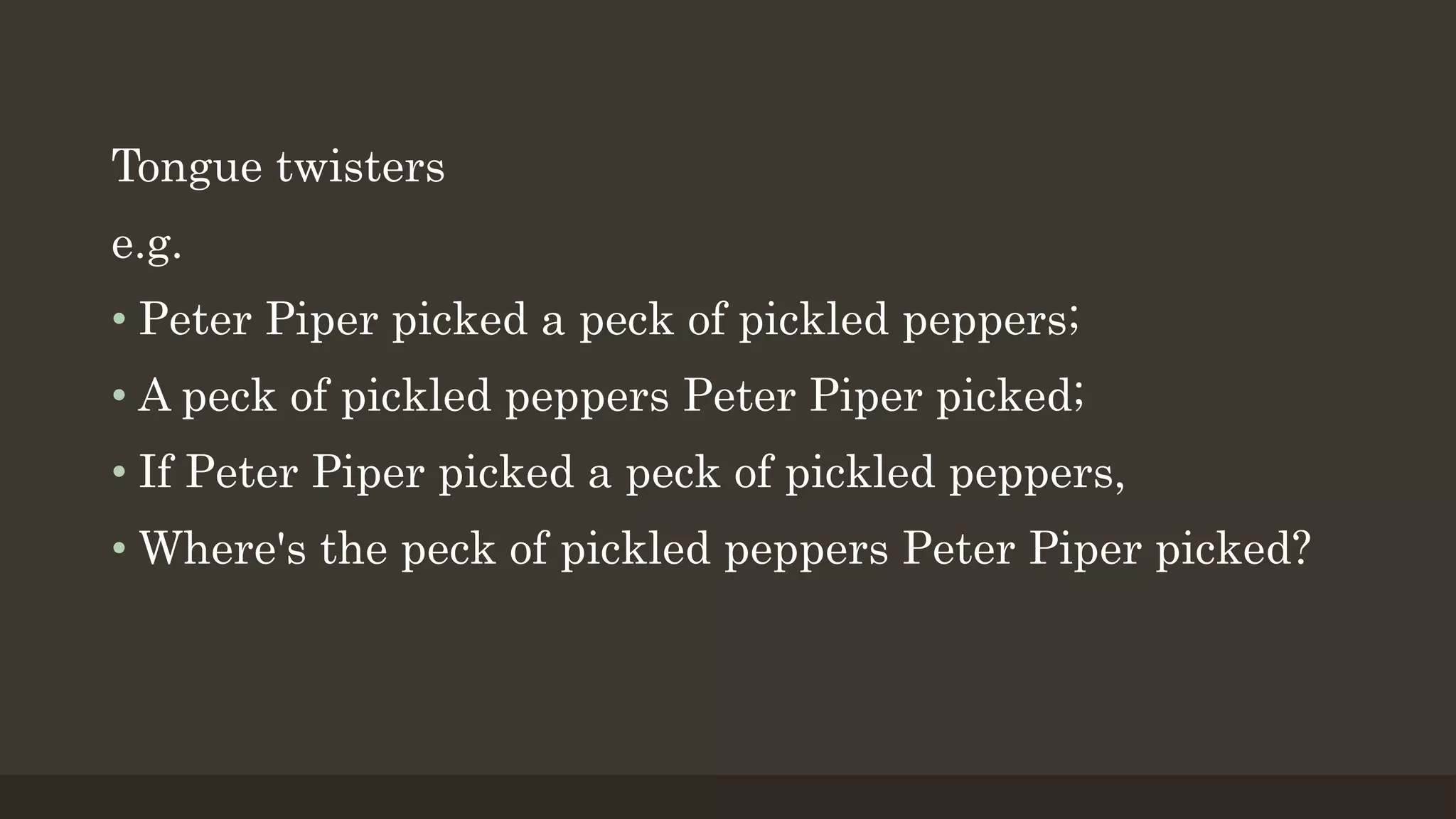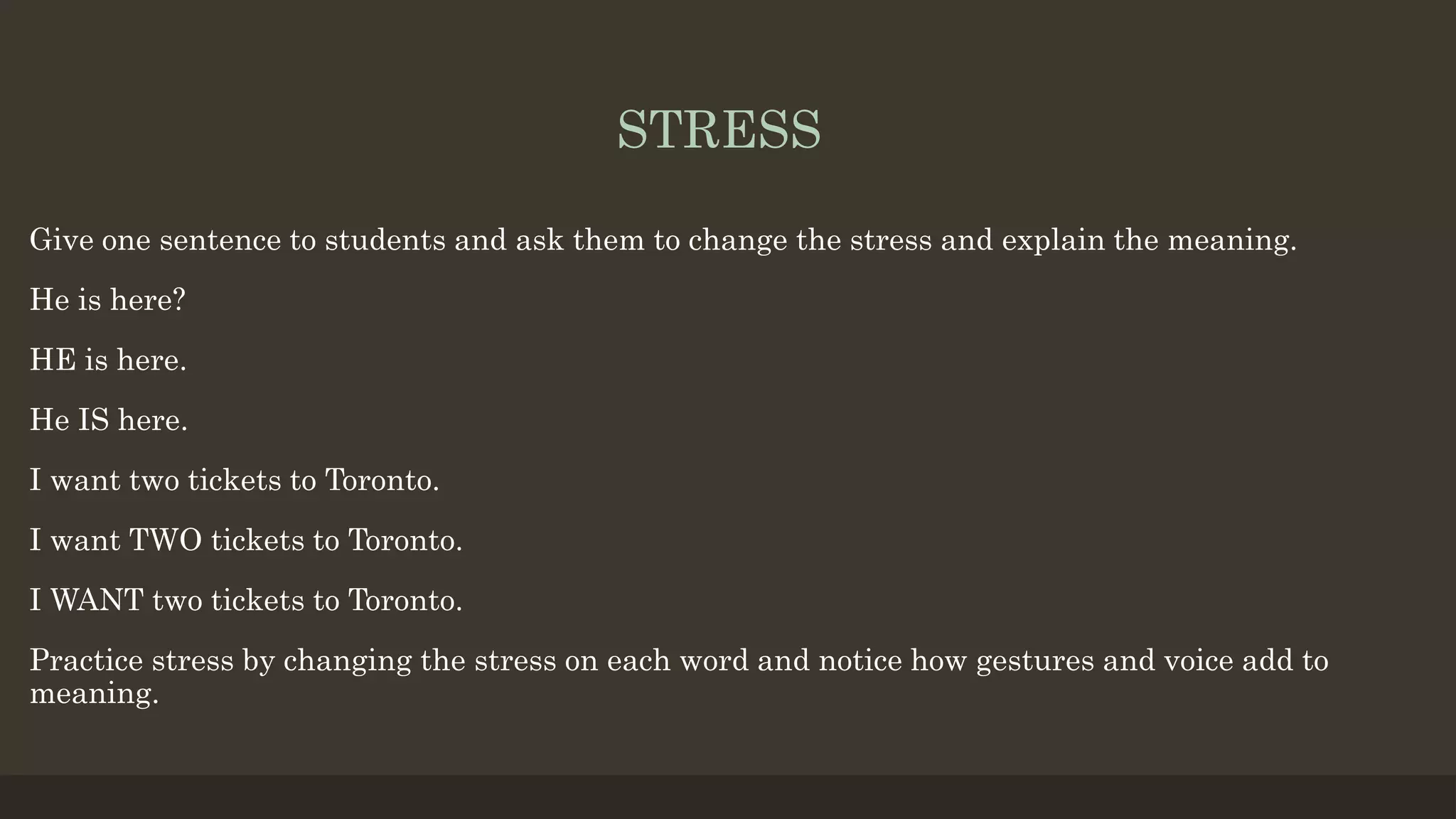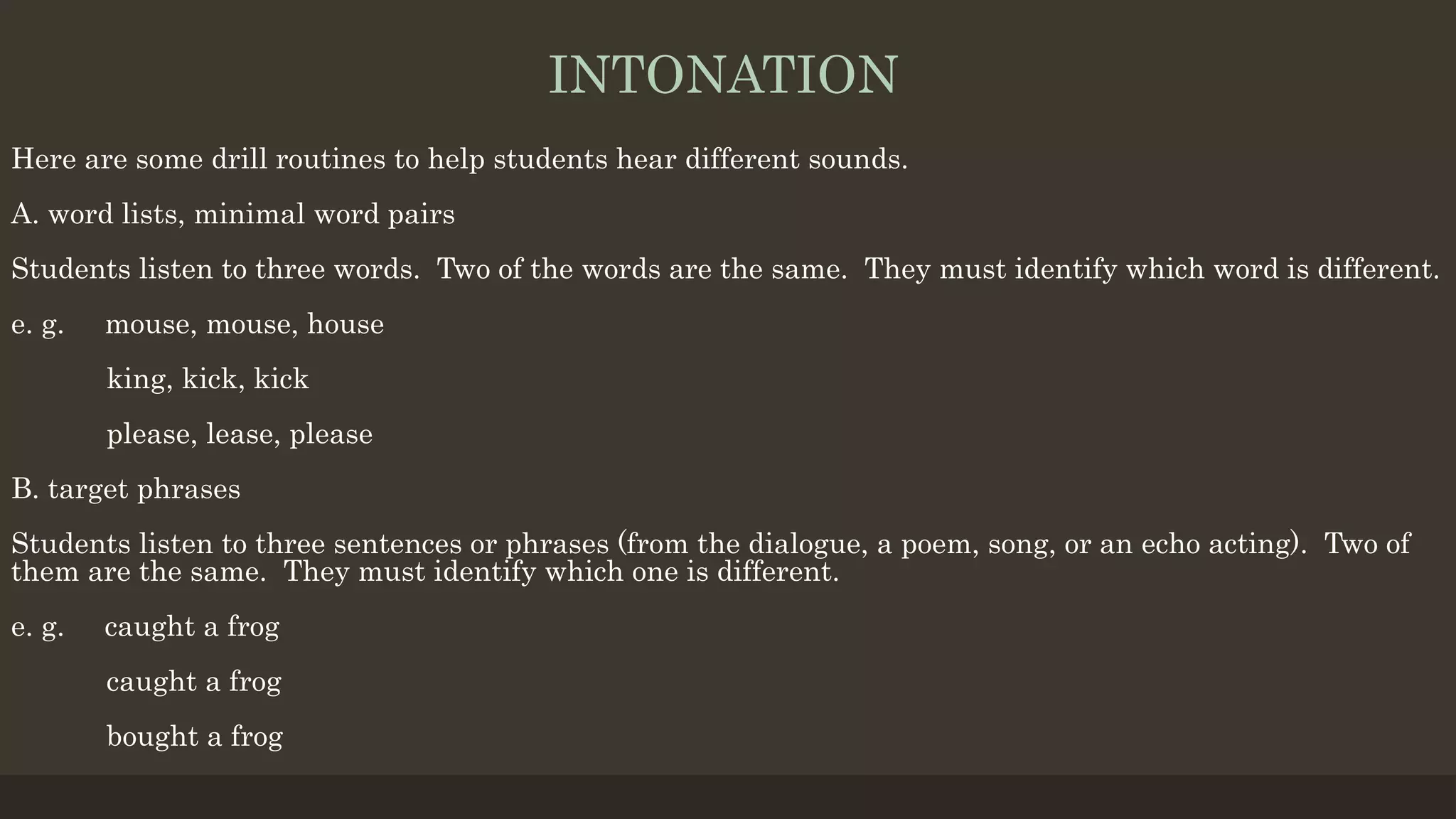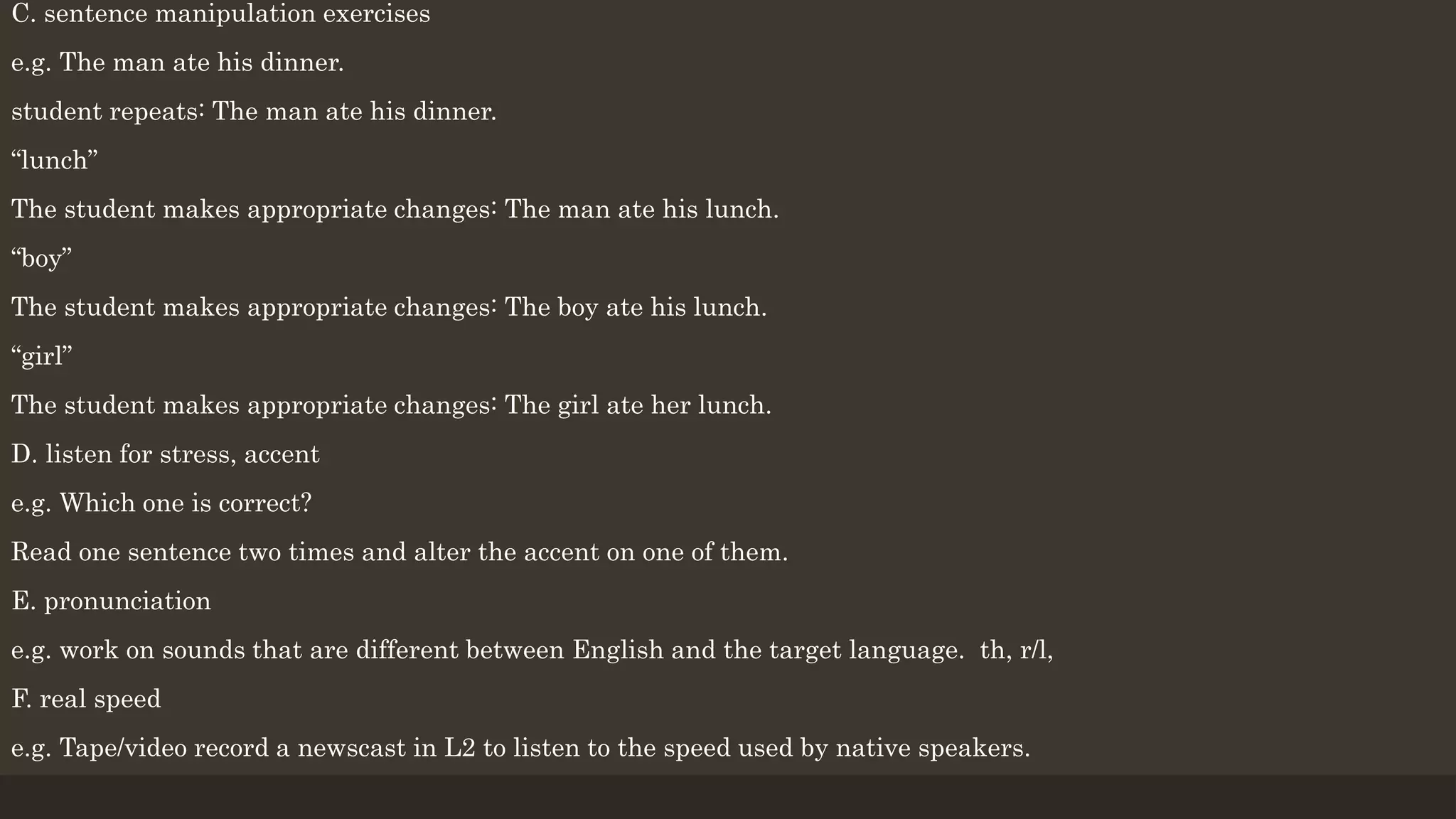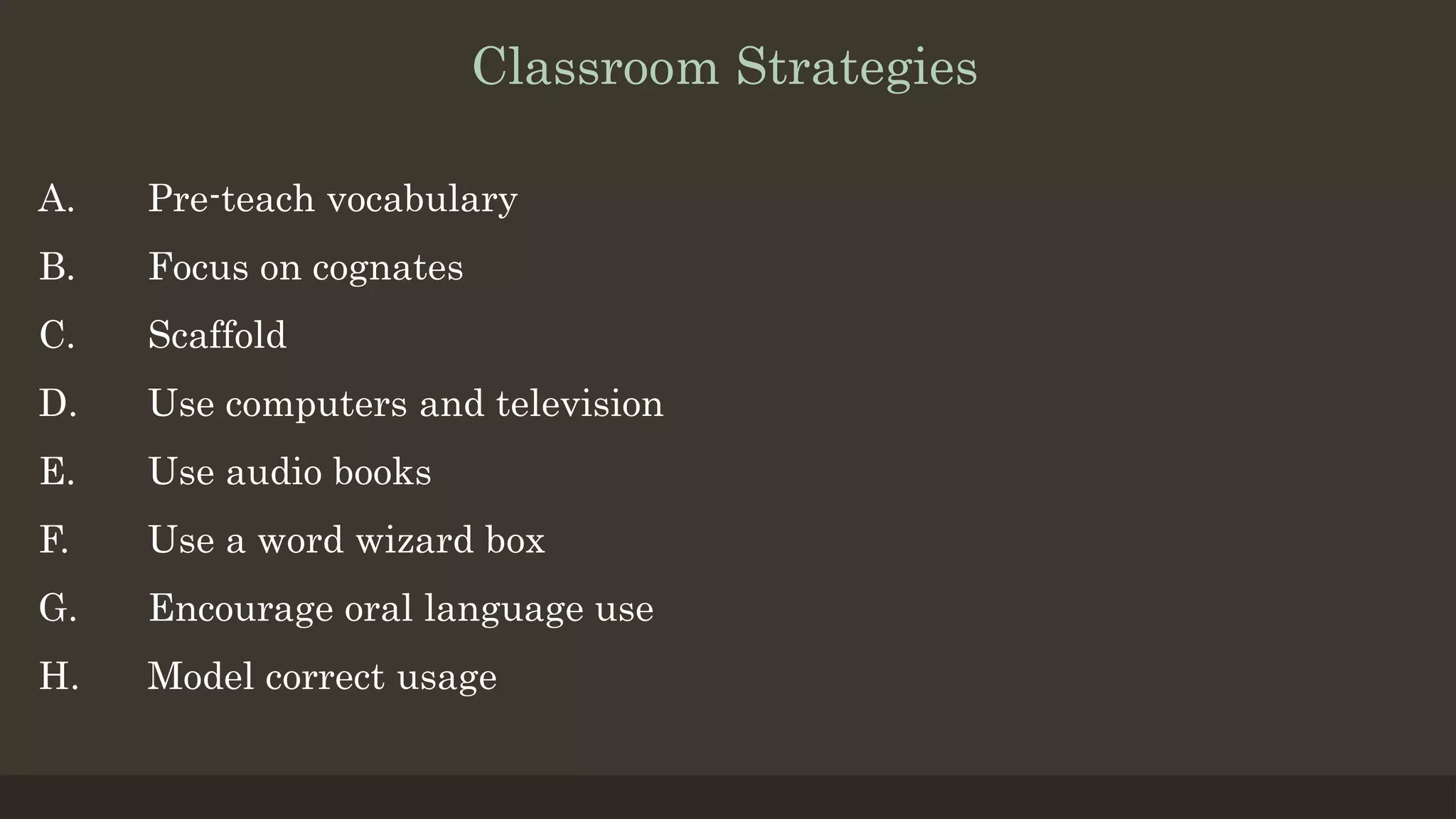This document discusses different aspects of teaching specific parts of language, including grammar, pronunciation, and vocabulary. For teaching grammar, it emphasizes connecting grammar points to communication contexts and focusing instruction on forms that are relevant to students' communication tasks. For teaching pronunciation, it recommends prioritizing problems that hinder communication and providing both perception and production practice. For teaching vocabulary, it suggests strategies like pre-teaching words, focusing on cognates, scaffolding, using technology, modeling usage, and encouraging oral language use.

